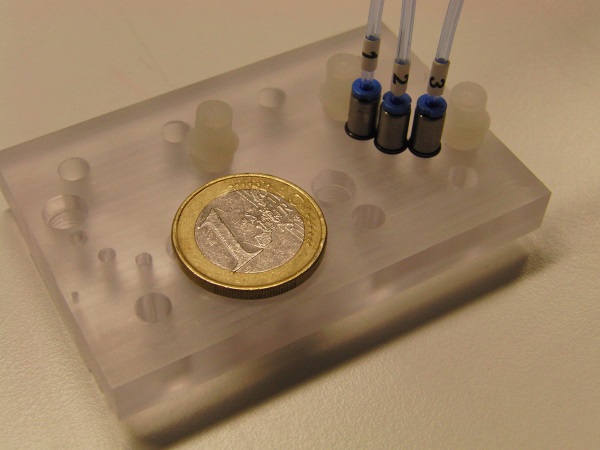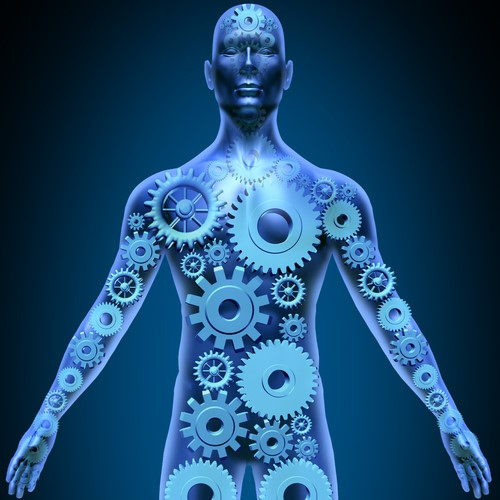Chip sandwich anyone? Human on a chip and chip on a cell
Two research announcements caught my eye today which show that healthcare has turned into a technology and is therefore improving exponentially.
Firstly the Institute of Microelectronics Barcelona have attached barcode chips to immature egg cells. Initially to be used for assisted reproduction when eggs need to be tracked and monitored, this could easily be modified to tag any cells which could then help with diagnosis – for example (and I’m totally guessing here) a batch of chipped cells could be injected or swallowed and then the whole body scanned to monitor where they end up – highlighted if organs are working as expected.
Then (on the other side of the chip sandwich) theres the human on a microfluidic chip. The Fraunhofer Institute for Material and Beam Technology have created a 1:100,000 scale human being (the organs anyway) which allows drugs to be checked for toxicity and efficacy in a much more realistic environment than today’s simple tissue samples. A device like this potentially allows every organ in the body to be tested early in the drug development process, minimising the risk of problems that only occur when the drug interacts with a living human body.

And in case you’re thinking that’s still a lot of work to do all that testing – check out this video on the BBC News website showing not only automated testing, but a robot that always makes its own decisions about what to test to make it even more efficient.
Mentioned in this blog post:
Click on resource name for more details.
Barcelona Microelectronics Institute (IMB)
IMB-CNM is a research institute of the Spanish Research Council (CSIC) developing micro and nano-electronic.
Fraunhofer Institute for Material and Beam Technology IWS
Institute for innovations in laser and surface technology.
Topics mentioned on this page:
Artificial OrgansMachine controls human - next step an app to define yourself
Medical technology meets Moore's Law equals in vivo diagnostics




